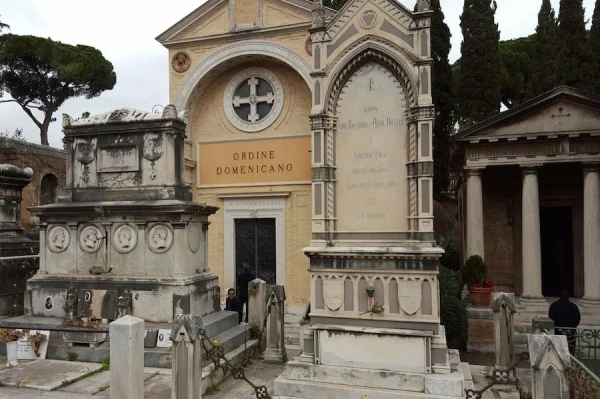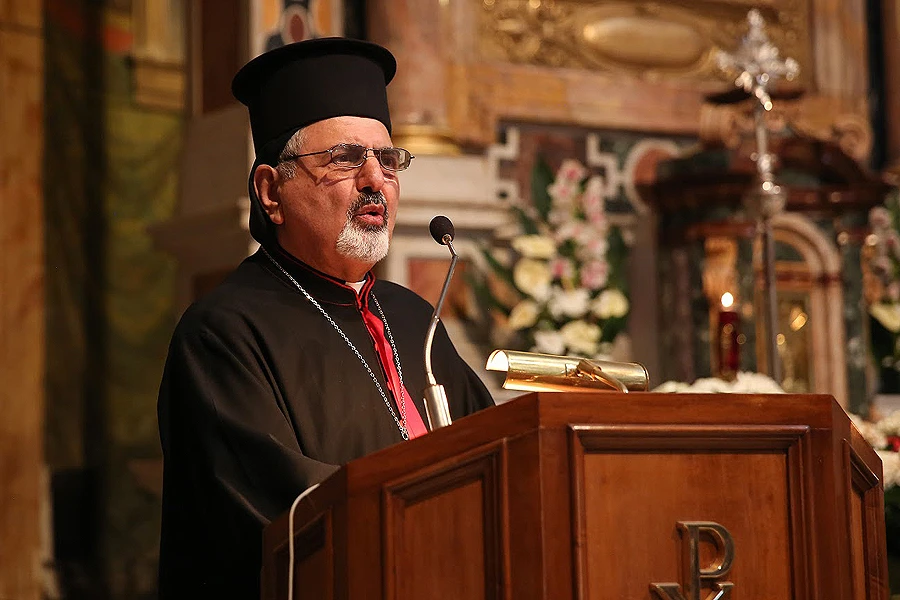
Rome, Italy, Jul 20, 2019 / 04:36 pm (CNA).- A little over 100 years ago, the Catholic Church’s first Filipino-born bishop died while on a visit to Rome. Now, a group of Filipino priests are on the hunt for his remains.
The search for Bishop Jorge Imperial Barlin’s bones began several years ago. Written records show he was buried in the Dominican mausoleum at the Campo Verano cemetery in 1909. But in the intervening time, the marker for the bishop’s tomb has been lost. Barlin was staying with Dominican brothers at the time of his death.
“Unfortunately, at the moment we cannot locate where he is buried,” Dominican Fr. Gerard Timoner told CNA.
Timoner, who was recently elected head of the Dominican Order, described himself as a “middle-man” in the process for finding Barlin. A Filipino, he is helping to serve as liaison between the Dominicans and the Filipino seminary in Rome.
At the time of his death, Barlin was leader of the Archdiocese of Nueva Caceras, which has asked permission, if Barlin’s remains is found, to bring them to the Philippines to be interred in the cathedral. The cemetery and the Dominicans have both given permission for this to take place.
The search is taking place, in part, because of an important anniversary in the life of the Church in the Philippines. The year 2021 will mark the 500th anniversary of Catholicism in the Philippines. The first Mass, and the first Baptism, took place in 1521.
Though Barlin is a significant figure for the Church in the Philippines, he is “not that well known, except in the region [he came from],” Timoner said, though “Jorge Barlin is very important because he was the first Filipino bishop.”
“And for many years, hundreds of years of evangelization, actually, the Philippines remained a missionary territory in the sense that there were no native clergy,” Timoner said, noting that “Barlin, as the first Filipino bishop, is the one who was able to, if you may call it this, surmount a kind of discrimination, because he was native.”
Barlin was ordained a priest in 1874 at the age of 28. Under Spanish colonization, Filipino priests were circumscribed to the lowest levels within the Church hierarchy and persecuted if they fought for reform. But Barlin was liked by Spanish Bishop Francisco Gainza, who protected the young priest, giving him positions of responsibility at the cathedral.
After Gainza died, Barlin was, for a time, assigned to smaller, isolated towns. But his spiritual and economic leadership were noticed by the new bishop, who named him vicar forane of the province of Sorsogon and parish priest of its capital town.
Under Barlin’s leadership, Sorsogon avoided the worst of the hostilities in the Philippine Revolution against Spain (and later the Philippine-American War).
But when the revolution did reach the region in 1898, the Spanish governor transferred his authority to Barlin before fleeing to Manila. As both religious and political leader, Barlin oversaw the peaceful transfer of political authority to the revolutionary government.
Nearly three years later, the priest again oversaw the peaceful transfer of the government to American forces when the Philippine revolutionaries were defeated. Under U.S. occupation, the political situation cooled.
After the capture of the president of the Philippine Republic in 1901, armed resistance to American colonists ended, but with an upsurge in Filipino nationalism, divisions arose in the Catholic Church.
Fr. Gregorio Aglipay, a revolutionary priest, severed ties with the Holy See, declaring the institution of the Philippine Independent Catholic Church. It is believed that in some provinces, nearly all the priests joined Aglipay in what is often referred to as the “Aglipay Church.”
Aglipay offered Barlin the highest ecclesiastical office in his new church, but the priest strongly rejected the offer. “Barlin, of course, remained steadfast,” Timoner said. He stayed faithful to the See of Peter.
The schismatic church then took over Catholic churches, defending the move as “peaceable occupation.” When an Aglipayan priest refused to vacate Fr. Barlin’s church, he brought the case to court, which ruled in his favor in 1904.
Barlin won again when the case was reheard by the Supreme Court two years later. The courts forced the schismatic clergy to vacate the buildings owned by the Catholic Church.
“Barlin’s role was crucial; otherwise if he had transferred, the [schismatic] church might have grown bigger than it is today,” Timoner said.
By this point, Barlin had become a bishop. He was named the 28th bishop of Nueva Caceres in December 1905 and consecrated in June 1906 in Manila at the age of 56. Just three years later, he fell ill while on his first ad limina visit to Rome, dying on Sept. 4, 1909.
In 2007, the Catholic bishops of the Philippines wrote a pastoral letter about Bishop Barlin, praising his “service to God and people.”
“When the temptation of power and prestige was offered him, he chose to remain faithful to his commitment. When such power was in his hands, he used the same responsibly always for the good of those he served,” they wrote.
Barlin chose Bonus miles Christi (“A good soldier of Christ”) for his episcopal motto. With his consecration, the bishops wrote, “it was the first time after three hundred years of Christianity in the Philippines that a Filipino was given such a dignity certainly, a milestone in the Philippine Church History, an event worth remembering and celebrating.”
If you value the news and views Catholic World Report provides, please consider donating to support our efforts. Your contribution will help us continue to make CWR available to all readers worldwide for free, without a subscription. Thank you for your generosity!
Click here for more information on donating to CWR. Click here to sign up for our newsletter.





Bishop Barlin was probalby even more significant than this article gives him credit for. The Aglipayan schism was an outgrowth of resentment against the Spanish Church which oppressed native clergy and was tightly allied with an overbearing civil society. The arrival of the Americans, who took an essentially neutral stand on religion, made possible strong Aglipayan inroads, especially in the northern provinces. It was faithful clergy like Balin and his allied native clergy, that held the Roman Church together and limited Aglipayan expansion as noted in this article. The end result is a strong Catholic Church in the Philippines today with over 80% of the country professing membership.